(Apologies in advance for the length of this post. It got away from me a bit, but hopefully it’s interesting.)
The debate around a Melbourne Airport rail link has progressed in the past few months, with all sides broadly agreeing it has to happen – the only question is when.
The Coalition and many others say now; the ALP say (assuming the Albion route) it should only happen after the Metro tunnel opens in 2026. Even Melbourne Airport, which famously makes millions from car parking, wants rail access.
(Some say it’s not viable at present, for instance Alan Davies presents these arguments, and he’s posted no shortage of related articles.)
Tuesday’s Federal Budget threw in $30 million of funding for a business case. Undoubtedly it’s a political move to help force State Labor into backtracking, but it may help things progress a little further.
(Is that a lot of money to write a business case? Presumably it can include some very in-depth investigations.)
What kind of rail link, and why?
Even with the Albion route being the default, it’s worth stepping back and considering why we want it, and what kind of rail link we want to have.
The main reasons for building it are to provide more capacity and consistent travel times as the Airport continues to grow, and the roads around and approaching it get busier. Melbourne is now ranked as the 50th busiest airport in the world, and one of the only ones that big without rail transport.
A big new double deck Skybus departs…leaving 30+ people behind.
When are we getting a train? pic.twitter.com/FdK8BPRu1T— Daniel Bowen (@danielbowen) January 5, 2017
The capacity advantage of rail is obvious. The current Skybus service, even with 88 seat double-decker buses every ten minutes, is swamped by demand, frequently leaving people behind to catch the next bus. While they can run more buses, given the biggest cost of running an extra service is the driver, there is a limit, and this drives up costs.
Consistency of travel time is the other big problem for Skybus. It frequently gets caught in traffic snarls around the CBD and on the motorway. Longer travel times mean more buses have to be used to maintain the service frequency, preventing higher frequencies.
Congestion could be bypassed by dedicated bus lanes and traffic light priority – in fact this would be the next logical step, before rail. But the government has shown zero indication that it’s interested in providing this – despite the recommendations of its independent umpire on such matters Infrastructure Victoria, which has said that such measures are required.
Melbourne Airport bus. Deliver a high level of onroad priority to bus services linking Melbourne Airport to central Melbourne, including better signalling and managed motorway improvements, over 0-10 years. This will maximise the capacity, efficiency and reliability of these services and defer the need for a more costly investment in a heavy rail line to Melbourne Airport to the 15-30 year period. Upgrading airport bus services will make this mode more attractive for use by employees at the airport and surrounding facilities and for travellers, reducing demand and congestion on the Tullamarine Freeway.
(For years, Skybus prominently advertised its twenty minute travel time. This recently disappeared off their web site — they now say 30 to 45 minutes. It’s unclear if this is a temporary omission during Citylink works, or permanent, in recognition that they often don’t meet it due to traffic congestion.)
There are other advantages to rail, such as ride quality and passenger comfort which are difficult to replicate with buses.
The need for speed
What about speed? For rail, this is highly dependent on the route. And while ten years ago I’d have said it has to be 20 minutes from the City, I’m now less sure this is critically important, as the competing modes (private car, taxi) increasingly get caught in a traffic mess of their own making.
This was brought home to me last year when visiting Singapore. To get to the airport, you catch the East-West line to Tanah Merah, and change to a shuttle train the rest of the way. It’s not spectacularly fast, and it’s certainly not faster than driving in uncongested conditions. But it’s incredibly popular, partly because it’s reliable, easy (even with the change of trains; it’s a cross-platform interchange between frequent services) and cheap.
So for Melbourne, I suspect as long as the travel time is consistently 30 minutes or less, it’s probably okay, as long as frequency is high.
Frequency and service span: the 2012 study said departures every 10 minutes, and operations 24 hours a day (presumably frequency reducing overnight, as Skybus does now). I’ve got no argument with that. It’s one of the things Skybus has got right, and the trip much easier than it was when the service was only half-hourly.
Fares: undoubtedly part of what’s holding back public transport mode share (despite Skybus booming, it’s still only 9% percent of airport trips) is the $19 each way price tag, with no discount for return trips, not even same day — so if you want to see somebody off, or meet them, it’s $38 just for your fare. Ka-ching!
For most public transport, the biggest part of the operating cost is the staff. So undoubtedly the bus mode itself, limiting passengers to 88 per bus and driver, is a contributor to the fares.
Even though this is cheaper per kilometre than other Australian airport express public transport, it’s still expensive compared to other local trips – most costing $4.10, including the train plus local bus option to the Airport which takes 3-4 times as long). Some level of premium isn’t unreasonable, but almost five times the price seems excessive, particularly when travelling in a group.
Airport workers can get a discount, rumoured to be in the region of $120 per month.
Sydney’s airport rail link is also quite expensive, but they have a weekly cap roughly equivalent to two trips, so if you’re working there every day, the $13.80 per trip premium for using the airport stations drops to a more reasonable $27.00 per week.
And it seems Sydney’s link patronage is increasing:
Weekend use of the Sydney Airport rail service has increased by 40% since 2014. Later this year we will double the number of trains pic.twitter.com/9zrxBzxM6o
— Howard Collins (@HowieCollins) May 14, 2017
So what are some of the options for Melbourne Airport rail?
Suburban trains – some world airport links just use extensions of the regular suburban network. This means carriages not necessarily specially designed for airport travellers, but it may also mean that providing the service is more economically viable, which may result in cheaper fares. (See: Sydney, London Tube, and more recently Dallas and Seattle, and Perth’s link under construction.)
Dedicated trains – often express, and you can have carriages designed for luggage. But very expensive if that’s all the train does, and that can mean limited usefulness for airport workers.
Regional/Interstate trains – some propose diverting the Bendigo line through the airport, or even making it part of an eventual High Speed Rail project. One weakness of these plans (apart from the fact that HSR may never happen) is you could end up with long distance trains serving a busy CBD to Airport route.
It’s the old Sunbury/Swan Hill problem again – before electrification, when Sunbury commuters were served by long distance trains, they packed trains as far as their stop, then left a near-empty train to trundle sometimes halfway across the state to its eventual destination.
Of course it would be possible to run City to Airport-only trains on the same tracks (and would be necessary for a decent frequency), though that might complicate the infrastructure, operations and ticketing.
Then there’s the monorail/light-rail/standalone shuttle train option, which has come up recently. Two main issues with these: firstly the Citylink contract might trigger compensation if the rail line is something other than part of the suburban network (though I’m sure a clever government could figure out a deal).
Secondly it limits the route’s network connections if it only runs to one CBD station… which depends on the route of course. And the beauty of rail options compatible with the existing suburban rail network is it can run as part of an existing line, and/or feed into the City Loop, increasing one-seat trips and providing more connections.
On the pro side, such a link might well be more affordable and built sooner than heavy rail.
(Extending the route 59 tram to the Airport would be useful for local Airport workers, but far too slow for anybody else.)
Even assuming heavy rail, which route?
As far as routes go, four options were considered by the 2012 study initiated by the Baillieu government.
Albion:
This is the default (base case) design now planned by the State government. It would see the new line branching off the Sunbury line at Albion, travelling northeast along the existing Albion freight railway corridor (presumably on new tracks) into the airport.
Pros: Would link into the rail tunnel, which means trains from Dandenong would run all the way to the Airport, providing a one-seat ride not just from the City, but also much of the southeast, as well as the CBD, the Parkville hospital and university district.
Cons: A little slow, with a possible travel time from Melbourne Central of about 30 minutes. This is because it would share the line from the City to Albion with other trains.
Still, if you allowed say 20 minutes from the City to Albion (as fast as the existing stopping Sunbury trains), then it shot like a rocket to the Airport along a new line (it’s about 15 km), under 30 minutes should be easily doable.
Costs thrown around seem to be in the billions, which seems very high, despite the relatively short section that doesn’t use an existing alignment. But perhaps that’s the cost of the new (double, electrified) line along that alignment.
The State Government maintains it’s not practical before the metro tunnel opens in 2026, because the City Loop is full. To which I say: if Airport rail is dependent on the tunnel, why not build it in parallel, so both can open in 2026?
Mind you, with some clever planning, in the shorter term Airport trains could probably run direct to Southern Cross, or via the City Loop (with Craigieburn or Upfield trains diverted) until the tunnel is built.
Some argue that the Sunshine to CBD track capacity will be eaten up by the Sunbury and Melton lines by the time the tunnel opens. One group proposes a completely separate line to Sunshine/Albion for it. That could be very pricey, and I think falls into the trap of rejecting incremental changes: theoretically one day the line will be too full (for a few hours a day in peak), therefore we must have an impractically expensive workaround.
Broadmeadows or Coolaroo suburban line extension:
Until last decade, the popular view was that you could just extend the Broadmeadows line west to the Airport. A reservation had been put in place in the 60s when the Airport was first built.
Pros: cheap. Good for Airport workers living along the existing line. (Remember, this is a substantial number of people, well over 10,000, and they travel to the Airport every day.)
Cons: apparently out of whack with the current Airport masterplan, which assumes rail would come in from the south, in line with the Albion plan.
Slow. Travel time likely to be around 35 minutes. (City to Broadmeadows is 29 minutes, and there’d be almost no opportunity to overtake unless extra tracks were built).
Congestion could be an issue on the existing line; patronage is growing fast.
Finally, the Craigieburn extension (opened in 2007) has put this option in doubt, because if there was a branch off the line, frequencies to the Airport (and Craigieburn) would be halved.
One variation involves diverting the Upfield line through Coolaroo to the Airport.
Going direct:
Via Highpoint and/or Flemington – the study grouped these separately, but they have similarities. This concept sees a line running more-or-less direct from the Airport, with long tunnels connecting via Highpoint, then either to the existing line at Flemington, or connecting near Footscray.
Pros: quick travel time, assessed by the 2012 study as around 20 minutes, possibly a little slower if there are several stops along the way.
Could provide stations to serve existing destinations such as the very busy Highpoint shopping centre, and proposed housing at Flemington around the racecourse. Perhaps also Airport West shopping centre, and even the new suburb to be built on ex-military land at Maribyrnong, just announced.
Cons: very expensive as it’d need a lot of tunnelling. Track capacity might be an issue at the City end. You could build more tracks, but where would they go in the CBD?
Lots of options
There are numerous options, and variations of each. They all have their pros and cons.
Personally I lean towards conventional suburban heavy rail, linked to the current network, either via Albion or (if we decide to solve north-western suburban issues as well, at additional cost of course) one of the direct tunnelled routes connecting Highpoint.
But ultimately, given widespread agreement that we need an Airport rail link, we as a city need to work out what we want it to do, and how we want it to work.
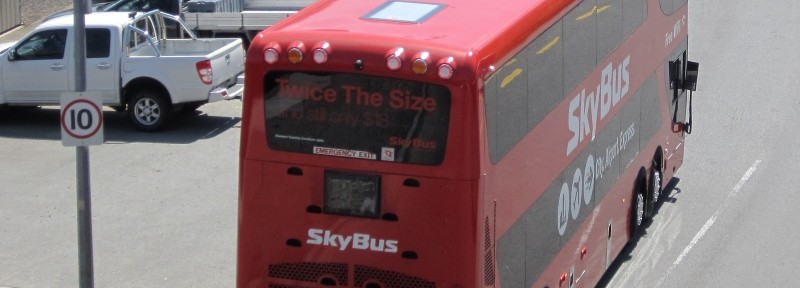
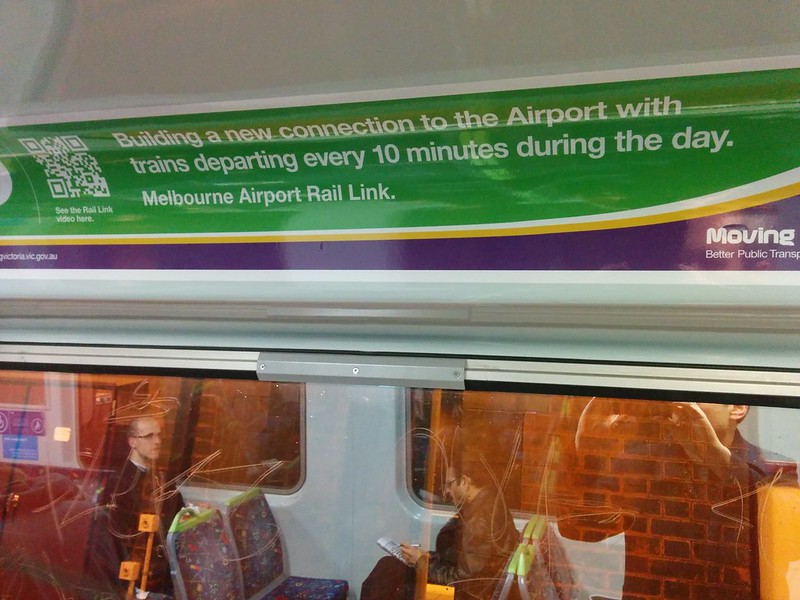
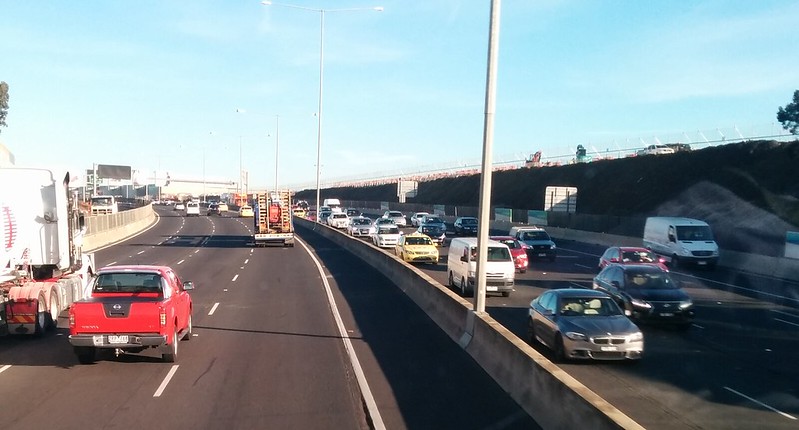
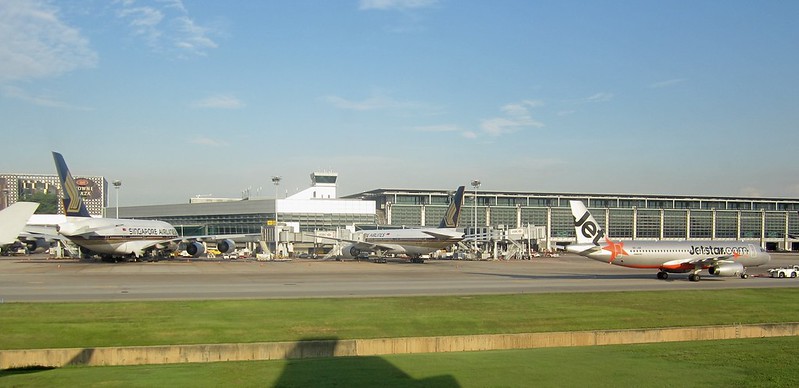
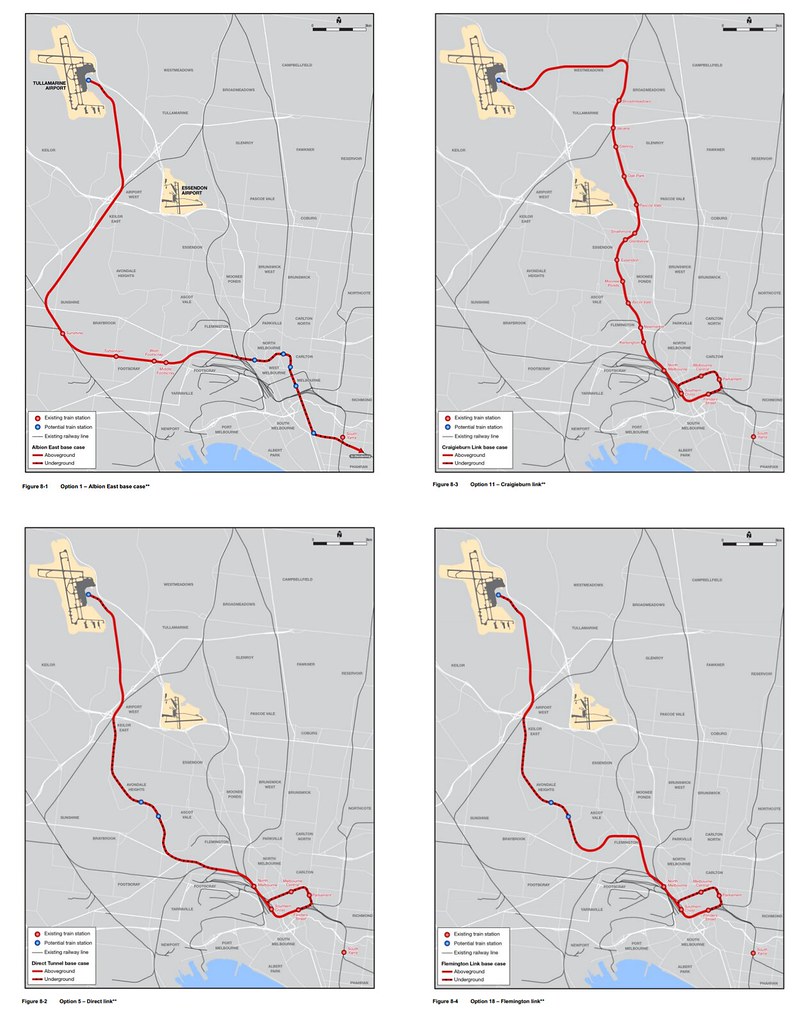
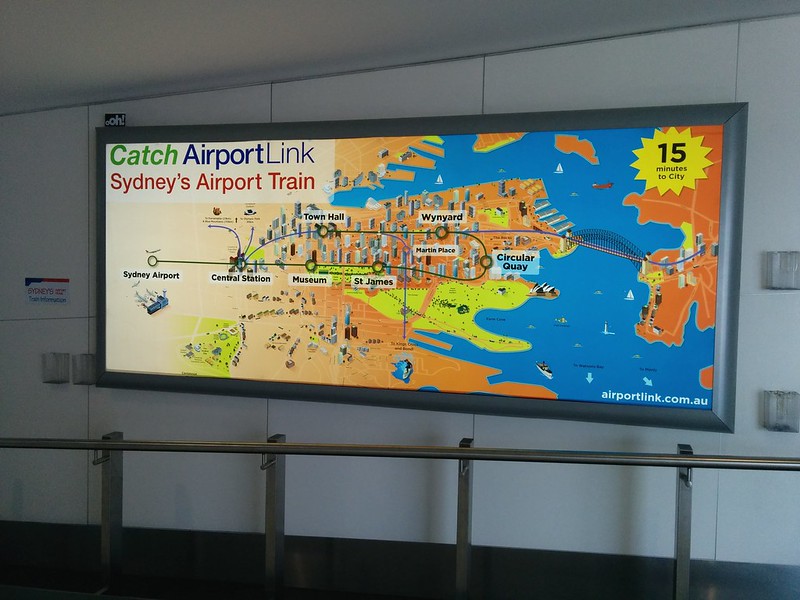
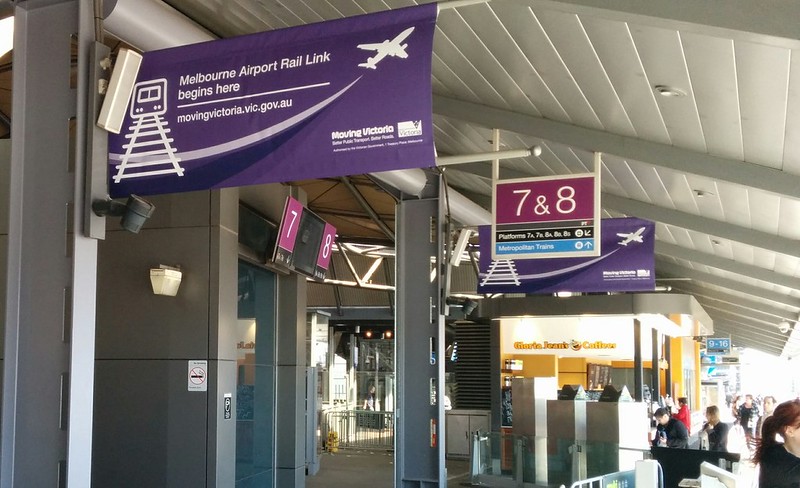
21 replies on “Which way to the Airport?”
You have a (sub)section titled “Regional/Interstate trains” but don’t actually mention any interstate trains. (The assumption is HSR would be the interstate service.) That, despite the Melb-Syd air corridor being one of the busiest in the world, and having an existing rail service.
As for the Bendigo line (and the Bendigo Metro), is there any possibility of it being converted to a metropolitan service, using the same trains as the new tunnel? Even if only as far as Clarkefield to link up with a slightly-extended Sunbury line?
The existing train+bus option can be done in just over an hour when the stars align (plus walking time at the airport) which really compares a lot more favourably to the often 45 minutes of the Skybus at the moment, considering the price.
All they’d have to do would be to add a dedicated Broadmeadows to airport shuttle bus which actually waited for the trains and then went express to the airport and it could easily be done in 45 minutes as well.
Let me present some of the facts and opinions of the RFI (Rail Futures Institute) in respect to airport railway links.
#1, they are pushing for, to have both Bendigo and Seymour lines redirected via Melbourne Airport. You can add a few extra short-run V/Line services in addition to those.
#2, We need to compare Melbourne Airport with Heathrow in London. Heathrow, to have 23 million who never leave the airport, plus 52 million who do. Melbourne Airport is predicted to have 52 million by 2027.
With point #2, should Melbourne Airport not have the same level of rail services of which Heathrow has?
It has the Piccadilly line, operating every 4 minutes on each of two routes. Then, you have both of the Heathrow connect, and Heathrow Express too.
Therefore, it is easy to justify a non-stop express link service, and, could we justify both the Albion route, and the Broadmeadows route too, and perhaps add in extending route #59 tram too.
Coming from Singapore, I’ve always been critical of the government, but I have to admit they got the train to the airport mostly right, and to add to that, there is no special fare to the airport. The normal fare structure applies to trips to the airport, something that is unlikely to happen here.
With that being said, the airport line in Singapore is a spur line off the East-West line, branching off at Tanah Merah. The closest equivalent here would be running off a frequent short trip either from Broadmeadows or Sunshine, which again I’m not sure if would be popular here.
One of the complains would be that the lack of spaces for luggage and having to share the train with commuters in peak hour, something that is also an issue on Singapore’s EW line.
If I was dictator of Victoria though, I would rather run a whole new dedicated line straight to the airport from Southern Cross without having to mess around with adding to the congestion on existing lines, or if I’m forced to run through the Albion spur loop, then I have to add dedicated tracks for the airport to avoid sharing it with freight traffic. Just my two cents as a ordinary commuter.
And as mentioned, seeing some suggesting extending tram 59 to the Airport, that would only make it a slightly better as right of way to the airport version of the existing system. Local buses currently connect the Airport West terminus of route 59 with the airport.
Broadmeadows was the best option, and overtaking was quite easy at Essendon and Meadow Fair (the junction): win win for everyone, but a useless Labor government promised ‘never’ after Liberal turned the freeway into a tollway. Albion is now the best route, but so-called RRL, revamped for 30 tph.
Forget gadgetbahns and green fields: too expensive. Elevated via the tollway would have to be tram compatible, with independent access from Melbourne SC, and use the ground-level tramline past Essendon airport.
The airport will ruin any plan with ripoff fares. Really, the airport line should have two-tier service, with trains stopping at Avondale Heights, and continuing beyond the airport to Greenvale. San Francisco does that, with trains reversing at the airport. There are many more airports in the world where the service is just another node on a network (Barcelona, Madrid, Frankfurt, Kobenhavn). I have the gravest fears: anything touched by PTV is turned to clay. Anything private is a disaster: stick to skybus.
All aboard the Sunshine express – there’s little reason to stop it more than twice between the city and the airport, as it would be picking up passengers from the other side of the network. That way you can run far greater frequencies, and have a V-Line interchange at Sunshine.
We also have to consider that they’ll be breaking ground at Koo Wee Rup before long.
I wonder whether something like Adelaide’s O-Bahn service might not be feasible for that route – that gets you uncongested right-of-way using vehicles that can also run on suburban streets, the journey can be broken up with junctions servicing other points along the route and iirc the overall cost to put in place was cheaper than rail at the time … maintenance since might have eaten that advantage in the mean time however
Did you miss that a week before the Federal Budget, the State Budget also included $10 million to investigate options to build sooner than Melbourne Metro / Albion route option?
http://www.theage.com.au/victoria/10-million-to-explore-rail-link-to-melbourne-airport-20170430-gvvphg.html
It’s unclear whether the $30 million from the Feds was actually requested by the state, or just some political posturing to make it look like they’re (a) actually doing something for suburban rail in Victoria, and (b) given that it would have been locked in before the $10 million was announced, look like they were a step ahead of the State Government.
My thought is that the route via Albion is the most feasible, and it doesn’t need billions in additional track or gold-plating. I saw someone suggest the idea of eventually shifting Werribee suburban and Geelong (electric regional) trains into an extension of this long-term idea for a “Metro 2” (Doncaster or Mernda corroidor route) tunnel beyond Fishermans Bend crossing under the Yarra to Newport. (Diesel trains may have to take an alternative route.) Similarly, at the same time someone else indicated that one day the tunnel between South Yarra and Domain may become redunant and a freight route and instead “Metro 1” (what we are building now) would be extended along St Kilda Rd and Dandenong Rd. That would grow the possibility of additional rail tunnels under the Yarra via Fishermans Bend (but could be an expensive pipedream).
The best way I could see this being handled would be to route an Albion airport route along the RRL (electrified) tracks mixing with the existing regional services, into Southern Cross or a similar terminus, and making sure that Melton and Wyndham Vale electric services are built out to run on the same Sunbury “Metro 1” corridor through Parkville. That would reduce a number of RRL trains in peak allowing space for airport services (although you’d still be pushing your luck!).
If we do build a new line to the airport, I really don’t think super duper speedy express is all that important. People will use it or they won’t use it, but 10 minutes isn’t something they’ll actually notice. Air travel is *slow* (with the only quick bit being the actual in-the-air part). Everything about airports and getting on and off planes is slow. 10 minutes additional travel time, if reliable and guaranteed, won’t break the effectiveness of a train service.
Which is also why I think new suburban stops should be a part of the plan. There are two good locations, at Keilor Park Drive and near Airport Drive (not far from Airport West Shopping Centre and the current 59 tram terminus). Both could have large commuter carparks (although may need policing to prevent people undercutting airport parking, rather than use by commuters) and provide much better wider city PT access for the north-west of Melbourne. With good local bus and tram (extension) connections, this could greatly improve PT access, and also PT access for locals to the airport and surrounds (as a growing industrial and commercial/employment district) given its major role as a huge employment hub. It would also greatly increase the number of travellers on the line at all times of day (especially peaks, although that’s when airport travel demand is also quite high), which would improve the economics and social outcomes of operating a frequent airport service. The fares for the suburban stops should be the same as the rest of the network, with a separate additional slug (if it is to be) for accessing the airport proper (much like Sydney); sensible caps like Sydney could be put in place so that regular travellers (i.e. workers at the airport) wouldn’t end up paying too much more at the end of each week.
However, the traditional image that’s been imagined for a Melbourne Airport train is express and “FAAAAST”, and I’m sure it’s the only one politicians (and investors and vested interests) have in mind, rather than the potential for modest additional cost for two additional suburban stations.
The idea of eventually having a bypass route for Bendigo regional trains could also be considered, given the inevitable congestion on the Sunbury corridor once more-frequent trains start emerging from the cross city Metro tunnel on that route (given the growth forecasts). There’s no reason an electric link via the airport would disregard that as a future option. It is potentially more useful than constructing express tracks along the existing Sunbury corridor anyway.
My intention would always be to keep these types of things standardised and simple. There’s no need for ridiculous bells and whistles and whiz-bang exotic solutions (even if the brochures are shiny). A route using part of the existing network via Albion, with suburban interchanges and the option for suburban stations, rather than an exotic solution that only shuttles between Melbourne CBD and the airport, seems to integrate with what we already have a lot better, and provides more options for the whole of Melbourne to use the service (especially those in the west and north, and the country), rather than just the CBD and inner (east and south).
I was thinking about this the other day, and wondered if the following package of works is the best way to achieve airport rail within the current network:
1. Electrify Werribee to Geelong (or Marshall)
2. Extend Werribee line to join current RRL tracks to Sunshine, then electrify.
This would create 2 new routes – extending the current Werribee expresses to Geelong and the Altona loop trains to Sunshine, leaving just the long distance trains running via the RRL via Sunshine
3. Extend the Upfield line to Craigieburn as per the PTV Dev plan
4. Electrify to Melton.
5. Use the Albion route to the airport, but link in to the RRL tracks to Southern Cross rather than the suburban network. Then extend the new airport line to the Broadmeadows line up to Craigieburn.
The way I see it, this means that Upfield/Craigieburn line passengers change at Craigieburn for an airport service, Werribee & Sunbury/Melton (metro) line passengers change at Sunshne, and everyone else changes at SCS (except Sandy line passengers who will have to make 2 changes).
I know this is pipedream, as money/practicalities make it impossible, but I would rather see the airport line as part of a bigger network package rather than just a ‘line to the airport’.
I proposed a souped-up 59 tram-train for Eddington. (An Xtram, I called it.) It would follow route 59 out of the city from a terminus in Victoria Street, then run beside Moonee Ponds Creek to avoid Mount Alexander Rd south, then turn up Dean St to an interchange at Moonee Ponds Junction. From there, new prioritised tracks run straight up the median of Mount Rd to Essendon rejoining route 59. It would diverge again to run up the middle of Bulla Rd, cross over the Tulla freeway into Essendon Airport initially in cut & cover to avoid the E-W runway (avoiding Keilor Rd & the southern end of Matthews Ave) , then interchange with the 59 terminus & up Melrose Drive on its own priority reservation into the airport.
The trams would be Yarra Trams-compatible (akin to two coupled Flexities with easily demountable luggage racks, in the peak running every 15 minutes to leave sufficient capacity in Elizabeth St & Flemington Rd for regular 59s and 58s). At the time, I threw a Mickleham Rd spur into the same package to add cheap extra network access.
It would stop only at interchanges for speed taking perhaps 40 minutes for the trip, be cheaper than heavy rail through less civil engineering & more intensive use of existing parts of route 59 (important in terms of equity when Rowville & Doncaster for starters cry out for rail), be network-compatible, and it’s development should be sufficient until Tulla warrants a fully-fledged metro alignment of its own.
Martin #11
A couple of questions:
1. What route would your proposed #5 new airport line use between the airport and Craigieburn (and what kind of junction with the existing track, if any, do you envisage)?;
2. Why have passengers change at Craigieburn and not, say, Roxburgh Park?
nicely written, I think the government should advertise the other options to the airport such as the buses from watergardens station as it’s very cheap and no additional cost if you’re already travelling by public transport on the same day
This is how I would do it:
Southern Cross to Newmarket: New track pair (perhaps utilising tracks around North Melbourne), with extra platforms at North Melbourne. Express tracks beside Craigieburn line including rebuilt, grade-separated Kensington. Pass on left (both tracks) through both Kensington and Newmarket.
Newmarket to Flemington: Special events only stop at Showgrounds (two platforms), renamed Flemington station.
Flemington to Airport: Skyrail/Tunnelling where required, stations at Highpoint and Airport West, then use Airport Drive reservation, enter tunnel.
Airport stations: T4, then perhaps ‘Main’ encompassing T1, T2 and T3. Keep provisions for Sunbury/Cragieburn extention.
Later: V/line diversion via Airport for Bendigo and Seymour lines. Bendigo line diversion starts before Sunbury station, Seymour before near Donnybrook. After airport, run alongside Metro services on separate tracks to the freight line, then run alongside on separate tracks to join RRL.
New Manor/West Werribee station, electrification to there (runs via Sunbury, Melton line tracks). Geelong RRL diversion back onto Werribee line on new tracks via express route to Newport, then into tunnel to Southern Cross along with Metro 2.
Expected cost: At least 20b dollars!
I just came back from Toronto Canada and love their UP Express airport train( Union Pearson express). Completely operate by diesel rail car made by Japanese company Nippon Shayro, rather unusual as Japanese firm normally don’t go for small order. The train was in some way quite similar to Vlocity but more comfortable, and with free wifi . En route it shares station with GO Trainsit , unfortunately GO Trainsit most use lower platform and and UP Express needs high platform which means the intermediate stops go very long platforms ( both low and high platform) , fare slight high owing to Toronto Pearson airport is quite far from CBD
@Kevin
It was mentioned in the article or one of the links of a reservation between Broadmeadows and the airport. If that is not there, then bang goes the idea. It was really only reading about the reservation that gave me the idea anyway.
In reality, I happen to side more with Alan Davies than Daniel on this one, which I almost never do. While I would much rather a rail link to the airport for the 0.5 times a year I use it, I find Sky bus is a more than serviceable option, and think we would be better spending our limited transport budget on other options.
The RFI plan is to provide an additional two tracks from Southern Cross (7/8, via a tunnel) to West Footscray, then rebuild that yard area for the dedicated airport fleet and six or so 1,800m sidings for holding superfreighters; then under Sunshine on a 2,000m radius curve running under McIntyre Road to maintain a high potential speed, raising to ground level before the Maribyrnong river, then later running up Airport Drive to serve the terminals. From there, it would extend to provide Bendigo, Swan Hill and Echuca by linking with the existing line around Clarkefield (if not Sunbury), and Seymour, Shepparton and Albury by linking with the existing line around Wallan, plus futureproofed capacity for an HSR route if that ever happens.
The runtime Southern Cross to Tullamarine via Sunshine depends on the type of train, but the expectation is somewhere between 10 1/2 to 12 1/2 minutes; advertised as 15 minutes as a precaution. Likely stock is something like the Hitachi 800 series dual-mode sets, which can run on both external electric power or diesel motors as required. Alternatively, we might explore an evolution of the Bombardier Zefiro, which can run at 380 km/h (but restricted to 200 km/h for this route due to curve radius).
The line cannot run via Albion because the curve there won’t provide a high enough average speed.
Additionally, absorbing the Bendigo and Seymour corridors into Tullamarine solves the future requirement for additional tracks Craigieburn to Kensington, and Sunbury to Sunshine, both of which would be hideously expensive – for example, it would mean re-digging both Ginifer and St Albans, and somehow shoving extra tracks through Kensington station or along the Upfield line and through Macaulay, under CityLink. (I also ran simulations of a route along Citylink, but the fastest possible speed limit on curves there would be around 160 km/h instead of 200 km/h via Sunshine, which means the CityLink option would be slower.)
As for serving people who work at the airport, my personal preference would be to divert the Upfield line thus:- Gowrie – Camp Rd – Seabrook – Broadmeadows (to Tullamarine facing south, to Coburg facing north) – Westmeadows – Gladstone Park SC – Airport Drive – Terminal.
The first segment of route would recycle the former Broadstore line, and the lower speed limit (curves 40 – 65 km/h) isn’t a problem for shorter trips with closely-spaced stops.
(Roderick: The expectation is that RRL will not have capacity for Bendigo in the medium term anyway, because even with a headway improvement and flyovers the sum of Ballarat and Geelong is expected to take most if not all of the available paths.)
The 901 and Broadmeadows train haven’t taken “3 to 4 times as long”, any of the times that I have used them.
I think the government should advertise other public transport alternatives which are a lot cheaper and can already use the existing infrastructure of the buses that run relatively frequently from airport west/ 901 smartbus which runs every 15 minutes and the 479 bus from sunbury station to the airport.
So for a greatly reduced cost a closed dedicated road could be built on the chosen route in a much faster time frame and 100 electric buses which would equate to the same cost and capacity as 2 new trains would be far easier to load balance and would better suit the demand of aircraft landings as was evaluated a couple of years ago when the train solution was not followed up.